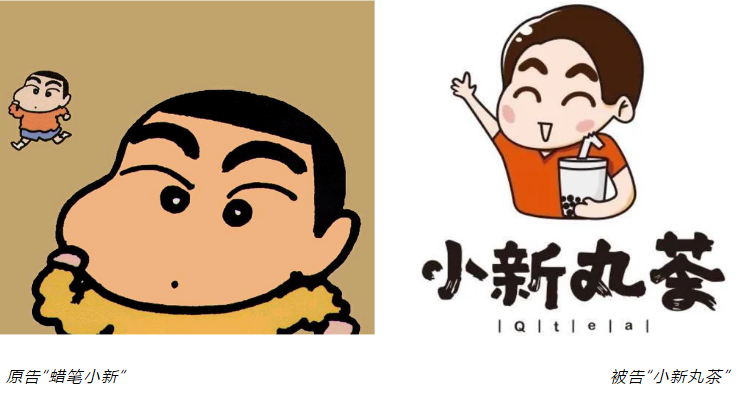Judgment of Approximation of Animation Images
2023.12.01
Publisher: Tan Yaowen
In addition to copying an animation image as it is, there is a higher level of plagiarism in the infringement of animation images. Between the similarity and non-similarity, the imitator’s use method is open, which cause great trouble to the copyright owner regarding whether it constitutes infringement or not. Since most of the prototypes or creative inspirations of anime images are derived from real people, there are different levels of originality, and the copyright owner’s content investment and commercial development of anime images also vary widely. Therefore, there are also differences in the popularity of anime images.

In the case of Animation International (Shanghai) Ltd. v. Guangzhou Xingji Brand Management Co., Ltd. and Guangzhou Zizhu Catering Management Co., Ltd. regarding the dispute over copyright infringement and unfair competition, Guangzhou Tianhe Court held that the underlying work was well-known, and that the head-to-body ratio, face shape, and eyebrow shape of the image were its standard characteristics and the core elements that make up the character image. These elements have formed a specific connection with the image of the underlying work. The pattern accused of the alleged infringement and the image of the underlying work were the same image of a child character. The head-body ratio, face shape and eyebrow shape are extremely similar to the corresponding elements of the underlying work, with only certain difference in the expression of the hair and the hairstyle. The pattern uses multiple core elements of the image of the underlying work, which constitute approximation given that the crayon Shin-chan image was well-known.

In the Deying Trading (Shenzhen) Co., Ltd. V. Hangzhou Hardcore Cultural Planning Co., Ltd. and Shenzhen Gaoyimeichen Space Technology Co., Ltd. regarding the dispute over copyright infringement, the Guangdong High Court held that the plaintiff’s “B.DUCK” image was totally different from the Defendant’s “WALNUT DUCK” in details in terms of facial features, expressions, movements, and body shape, except the same colors used and the peach-shaped head. Regarding the same artistic expression details mentioned above, first, the colors. Yellow was used in places covered by the feathers of the duckling, and orange-yellow was use on the mouth, legs and feet of the duck. This was a photo of duckling in nature. They were common expression elements for the art world in drawing duckling-themed works. Any creator can use it freely. Therefore, the choice and collocation of the colors is not unique to “B. DUCK”. Second, the contour of the head. The head of “WALNUT DUCK” was like a “pressed peach”, while that of “B. DUCK” was a standard “peach”. The shapes of the two were not exactly the same. Moreover, this expression has appeared before, not a original expression of “B.DUCK”.
Although the plaintiff won and lost the lawsuit in two separate cases, there was consistency in the court’s trial logic. That is, where the animation image is original and well-known, if the other party’s work uses the original expression of the work, it will not affect the judgment of the composition even if there is a slight difference. If the originality of the animation image is not high, unless the other party’s work is exactly the same, the difference will not be judged as an approximation.







